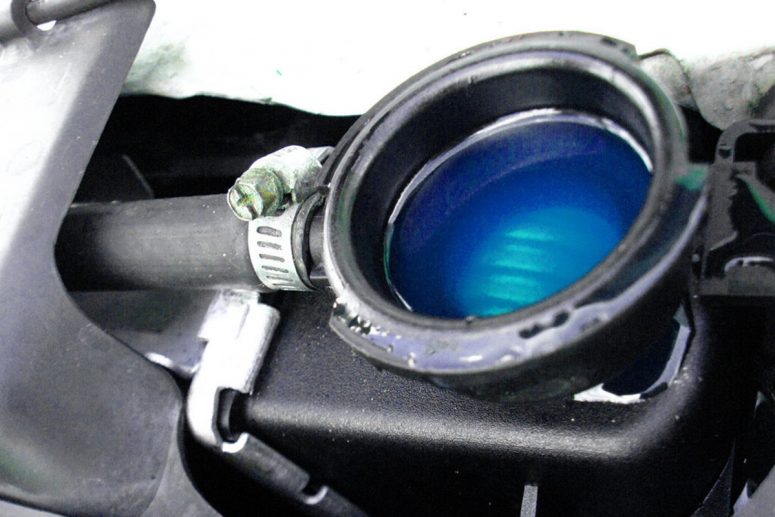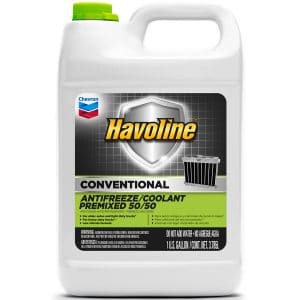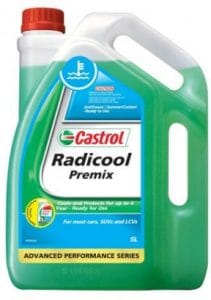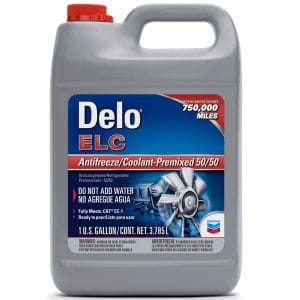ethylene-glycol with phosphate based coolant
What are coolants? How are they used? What kinds of coolants are there? In today's article, nosotros volition examine the chemicals, applications, and use of coolants on equipment and mechanism.
What Are Coolants?
Coolants are a fluid that run continuously across the engine in order to absorb some of the heat and acquit it to the radiator where the fluid will cool before rotating into the engine once more. In its near fundamental role, coolants are used on combustion engines or any engines that burn fuel to produce power. Click here if you're concern is in need of a consistent coolant and chemical supplier.
The 3 Key Components to Coolants
Coolants are commonly fabricated with three fundamental components. H2o, Glycol, and an additive commonly an inhibitor package.
Water: i of the most arable substances on the earth. Information technology's inexpensive, and information technology is ane of the nearly effective estrus exchange mediums effectually. Nevertheless due to a rather loftier freezing bespeak, and depression boiling betoken, water by itself cannot consummate the job. The engine temperature within combustible engines very quickly reaches the boiling point thus pregnant that water would exist ineffective.
Glycol: commonly referred to equally anti-freeze (ethylene or propylene glycol) is added to water to both withstand freezing temperatures, equally well equally increase water's boiling point. With these properties added to water, the proper engine cooling can have place. Ethelyn glycol has superior oestrus exchanging backdrop but is far more than toxic than propylene glycol. Never mix the ii glycol groups as it causes errors when measuring freeze points.
Additives: The final ingredient in coolant soup is a chemical inhibitor. This is added to assist foreclose corrosion in the radiator, water pump, and any other cooling organisation involved in the process.

What Is Ethylene Glycol Coolant?
Ethylene glycol is an alcohol-based organic compound that often serves as an antifreeze amanuensis in vehicle and heating, ventilation, and air conditioning (HVAC) systems. This liquid is colorless, odorless, and has a freezing temperature of -10 degrees Fahrenheit. When you lot mix ethylene glycol with water, its freezing temperature drops farther to allow information technology to remain a liquid at lower temperatures.
Some of the most common applications of ethylene glycol include coolant and antifreeze, which foreclose your car's engine from overheating and freezing.
What Makes Ethylene Glycol Coolant Different?
Ethylene glycol is a critical ingredient for low-temperature hydronic systems in which chillers and air handling units (AHUs) are outdoors, or the equipment is essential in depression-temperature processes. Using ethylene glycol helps reduce h2o'south freezing temperature to enable lower temperature performance and preclude freezing.
Compared to other types of glycol coolants such every bit propylene glycol, ethylene glycol is more thermally conductive. This substance is also less viscous and flows more chop-chop, which is beneficial in heat transfer applications. A higher viscosity requires boosted energy to motility the substance through the system, making ethylene glycol a adept pick for applications where thermal functioning is the highest priority.
How Does an Ethylene and Glycol Combination Brand the Coolant Dissimilar?
While h2o is efficient in heat transfers, its low ambient operating temperature can lead to potential organisation failures. Vehicle manufacturers have used several different chemicals over the years to accost the weakness of h2o, with each option having its own ready of disadvantages and advantages. Due to its versatility and low volatility, glycol is the antifreeze compound of choice today.
The primary advantage of using ethylene glycol is its low freezing signal. Adding glycol to a water-based organization stops ice from forming at lower temperatures, allowing for better performance. Some of the additional benefits of ethylene glycol-based coolant include:
- Ethylene glycol is like to h2o for a homogenous mixture
- It has a low freezing and humid point and is an fantabulous component in the manufacturing industry.
- The compounds are long-lasting.
- This substance has high rut transfer abilities.
The Unlike Types of Coolants
Now that you know what goes into coolants and how it keeps your systems within manageable temperatures, we can begin to larn nigh different types of coolants.
Conventional Low-silicate
This is commonly called Antifreeze. This bright green fluorescent liquid contains silicates, a compound salt that contains both Silicon and oxygen molecules that work as resistors within the fluid to increase the humid bespeak and lower the freezing point. The silicate also coats the metallic parts of your car inhibiting corrosion inside the system.
Conventional Low-silicate Example: 
Havoline Conventional Antifreeze 50/50
Havoline® Conventional Antifreeze/Coolants are low silicate, ethylene glycol-based multi-purpose coolants, available as concentrates or fifty/l pre-diluted products, designed for utilise in automotive engines where silicates are needed and with SCA addition in heavy-duty diesel engines.
- Service Life — ii years or 50,000 miles (eighty,500 km) in automotive service or upwards to 250,000 miles
- Protection — Provides excellent protection to automotive cooling arrangement components including aluminum.
- Wide temperature application – Protects against winter freeze up and minimizes the chances of summer boil over.
- Antifoam properties – Excellent antifoam package minimizes foaming potential.
Fully-formulated Coolant
A more specialized grade of coolant that uses SCA's or supplemental coolant additives which are by design used to protect the quality of your cylinders from a condition known as cavitation an event where the high pressure within the chamber causes perforation over time. In order to maintain an constructive level of protection against cavitation, SCA'southward must be periodically added to the mixture. This addition of solid additives to the mixture can result in some seal and vane damage and wear over long periods of time.
Fully-formulated Coolant Instance:
Castrol Radicool Premix
A ready to use a coolant formulated using mono-ethylene glycol and selected additives, gratis from nitrite, amine and phosphate inhibitors. It uses hybrid applied science for the modernistic performance engines of cars and trucks.
-
Contains no nitrites, amines or phosphates
-
Effective engine cooling without boiling
-
Protection against corrosion in the alloys used in the cooling systems of modern vehicles
- Protection against freezing depending on the concentration
-
Protection against cavitation corrosion
Extended Life Coolants (ELC)
Used primarily for heavy-duty vehicles, ELC's are synthesized with properties that prevent liner cavitation (see fully formulated coolants). These coolants can exist nitrated(nitrated organic additive technology NOAT) to improve fluid flow, or nitrate-free (Organic additive technology, OAT) depending on the OEM requirements. SCA's are not required merely inhibitor additives can be added to extend the lifetime of the coolant. ELC's practise not contain solid additives extending the life of your pump.
Extended Life Coolant Example: 
Delo ELC Advanced Antifreeze/Coolant products take a patented formulation for protection and compatibility with flux brazing remainder nowadays from the manufacturing process of today'due south aluminum oestrus exchangers. at that place are no solid additives included in ELCs, thus extend their pump life.
- Long Service Life: Service life of i,000,000/i,600,000 km on-road use / 20,000 hours off-highway apply, or 8 years
- Optimal Cooling System Operation – No gel or deposit formation! Silicates and other SCA deposits can reduce rut transfer and increase downtime due to overheating.
- Environmentally Friendly: Biodegradable in its unused course. Phosphate, borate, silicate, 2EHA, and amine-free
Can You Combine Coolants?
While the topic of combining coolants has varying opinions and views, it is generally believed that coolants "can" be mixed if needed for an emergency fill up-up, but "should" be used without combining properties as to get the premium event that the coolant was designed for.
Make sure that you are always using the correct coolant for the right job! SC Fuels offers a full line of coolants and chemicals from name brands such every bit Chevron, and Valvoline. Contact us to learn how SC Fuels can relieve you money on fuel, lubes, and coolants!
Source: https://www.scfuels.com/the-sc-fuels-guide-to-coolants/

0 Response to "ethylene-glycol with phosphate based coolant"
Post a Comment